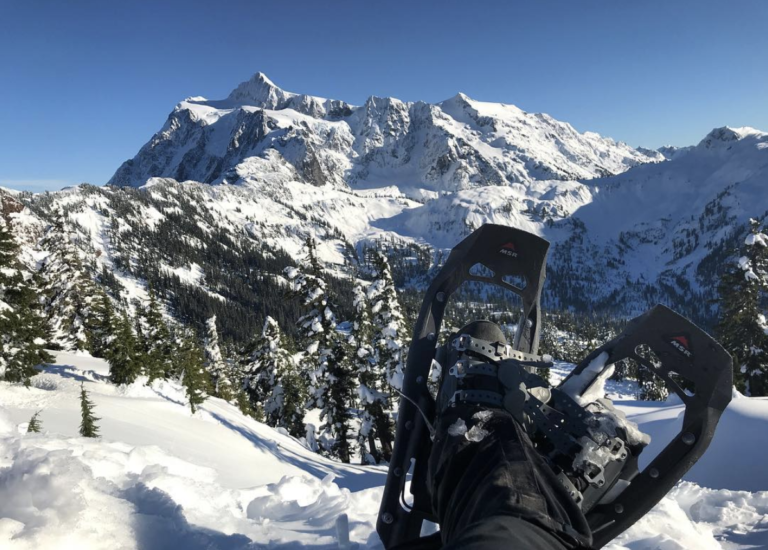Did you know? You can find a great trip somewhere on the Pacific Northwest Trail in any season. Low-elevation sections of trail, like those in the temperate Puget Sound, can be hiked any time of year. For those prepared for snow travel, there are opportunities to #GetOutside and enjoy skiing, snowshoeing, and backcountry camping along the PNT throughout the trail corridor.
Winter trips on the Pacific Northwest Trail require extra planning and caution; much of the PNT travels through avalanche terrain. Be sure to check road and weather conditions before your visit. Snow travel and avalanche skills and equipment are recommended and may be required for even short trips on the PNT in winter. Visit the links below and our climate and weather page for more information about winter trip planning on the PNT.
Embrace the Season and Get Outside
Section 1
Cross country skiers and snowshoers can follow the PNT from the Polebridge Ranger Station, along Bowman Creek for a five mile trip (one way) to Bowman Lake in Glacier National Park. Check local road conditions before you go; the North Fork Road 486 is infrequently plowed. Be sure to visit the Flathead Avalanche Center’s website for an avalanche forecast for the Rocky Mountains before you go.
Section 3
Snowshoe or cross-country ski through old growth cedar and hemlock groves along the Long Canyon Trail, a lower elevation alternate route of the PNT in Selkirk Mountains. This winter-accessible trail in the Idaho-Panhandle National Forest is a short drive from Bonners Ferry. Check the Idaho Panhandle Avalanche Center’s website for a favorable avalanche forecasts for the Selkirk Mountains before your trip.
Section 4
In Eastern Washington, wintertime trips on the challenging Sherman Loop Trail reward snowshoers and skiers with views of the Columbia River Valley, rolling Okanogan Highlands, and the Kettle River Range. For an overnight trip, the Snow Peak Cabin on the Colville National Forest makes for a cozy destination five miles (one way) along the PNT from the Kettle Crest Trailhead. Reservations are required for overnight stays for this popular winter retreat.
Section 7
From the Mt Baker Ski Area, Skiers and snowshoers can enjoy breathtaking views of Mt Shuksan and Mt Baker clad in winter white while climbing the PNT to Heather Meadows and Artist Point. Be sure to pack proper avalanche gear– it is required outside of the ski area boundary by the forest and County Sheriff.
Lower elevation trails on the PNT in the Mt Baker-Snoqualmie National Forest include the Hannegan Pass Road, which climbs at a gentle grade along the North Fork of the Nooksack River. To the south, the Baker Lake Trail 610 follows the eastern shores of Baker Lake through stands of giant old growth forests dripping with mosses. Be sure to check road conditions and visit the website of the Northwest Avalanche Center for detailed forecasts in the North Cascades before your visit.
Section 8
Unprepared for snow? The Puget Sound is the most easily accessible section of the Pacific Northwest Trail. A maritime climate offers year-round hiking and cycling, world-class wildlife viewing, and hundreds of miles of shoreline to explore. Higher elevation trails in Deception Pass State Park might be slick–check conditions before you go.
Section 9
On the Olympic Peninsula, enjoy sweeping views of the Olympic Range while snowshoeing or skiing along the PNT on Hurricane Ridge in Olympic National Park, a short trip from Port Angeles. Be sure to visit Olympic National Park’s website for Hurricane Ridge Road status and the Northwest Avalanche Center for detailed forecasts for the Olympic Mountains.

